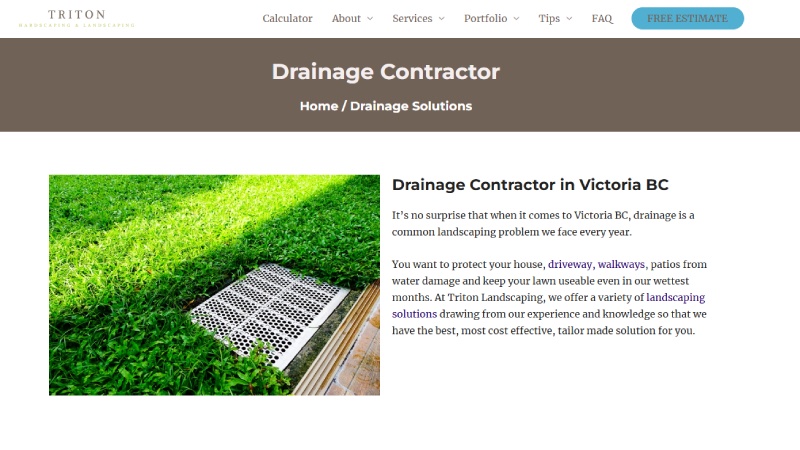
Until it is too late, most homeowners give little thought to drainage. After heavy rain, you could see small cracks developing in your walls or water collecting in your yard, but you don’t know that bad drainage is silently deteriorating your house’s basis. Over time, excess water can cause major structural harm paves way for expensive repairs that could have been avoided. Before it’s too late, let us decompose how bad drainage impacts your house and what you can do to remedy it.
How Poor Drainage Damages Your Foundation
Among the most serious threats to the foundation of your house is water. Improperly discharged excess water may seep around your property into the ground, causing the next problems:
1. Soil Erosion
Gradually, water runoff can erode the earth underlaying your foundation. Your house may settle irregularly as this soil changes, producing cracks in walls, ceilings, and floors.
2. Hydrostatic Pressure
Water accumulating around your foundation causes hydrostatic pressure, pushing on the foundation walls. This stress eventually can make walls bend, crack, or even drop.
3. Basement Flooding & Mold Growth
Improper drainage of water can seep into your basement, cause floods, and result in continuous humidity problems. This sets the ideal stage for mold development and hence health issues both for your family and you.
4. Freezing and Thawing Cycles
Trapped moisture will freeze and expand in colder months, thereby stressing your foundation even more. Thawing causes ground to contract, thus increasing the instability. Over time, this never-ending loop erodes the base.
Signs Your Home Has a Drainage Problem
If you notice any of these warning signs, your home’s foundation might already be at risk:
✔️ Water pooling around your home after rain
✔️ Cracks in walls, floors, or ceilings
✔️ Doors and windows that stick or won’t close properly
✔️ A damp or musty basement
✔️ Uneven floors or sinking areas in your yard
Paying no attention to these warnings can cause expensive foundation repairs as well as major structural problems.
How to Protect Your Home from Poor Drainage
1. Install a Proper Gutter System
Your initial shield against water damage is good gutter maintenance system. To stop water from pooling, make sure the gutters are free of rubbish and the downspouts run at least 5-10 feet from your home.
2. Use Grading to Direct Water Away
Your house ought to sit in a low-grade slope to promote good drainage. Regrading your yard or putting in a French drain might be needed if water tends to gather near the foundation.
3. Invest in a French Drain or Dry Well
Using a perforated pipe buried in gravel, a French drain is a straightforward but efficient solution that guides extra water away from your house. French drains can greatly lessen the possibility of foundation damage in places like Drainage Victoria BC, which has a lot of rain, by being installed.
4. Consider a Sump Pump for Your Basement
A sump pump is an excellent investment for stopping floods if your house has a basement. Before it seeps into your foundation, it naturally pushes excess water out.
5. Fix Cracks and Seal Your Foundation
If not addressed, tiny foundation cracks can become significant structural issues fast. Keep damp out by frequently checking your foundation and sealing any fissures with waterproof sealant. Experts in Drainage Victoria BC advise homeowners to seal basement walls and floors to stop long-term water damage.
Final Thoughts: Don’t Ignore Drainage Issues
Though it could seem small fries, poor drainage when neglected could cause significant and expensive harm. Preserving the foundation of your house calls for proactiveness—from good grading to drainage system installation. Acting now will save you costly fixes and keep your house safe and secure for many years.
Don’t let damage become extreme; act now to shore up your foundation if you have continuous water problems.